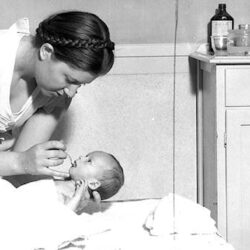Practice babies: how universities borrowed orphans to teach parenting
Home economics (today more commonly named family and consumer sciences) is a subject dealing with running a household. Typical matters taught at home economics (usually abbreviated as home ec in the U.S.) classes are nutrition, family finance, human development, interior design. Home economics is present in many countries as a mandatory or voluntary course, usually in high school. Historically, it was also taught in universities. It was more focused on











